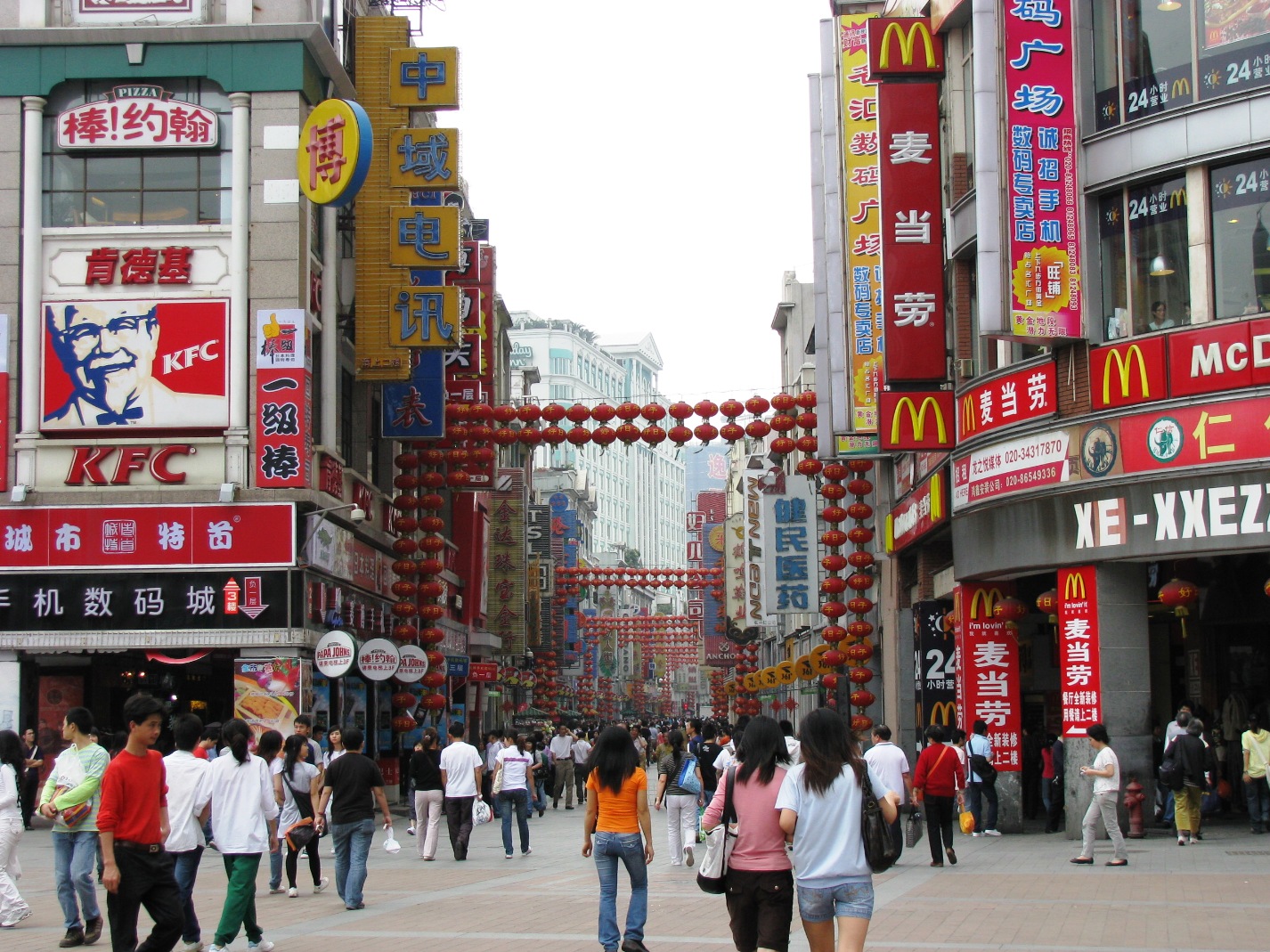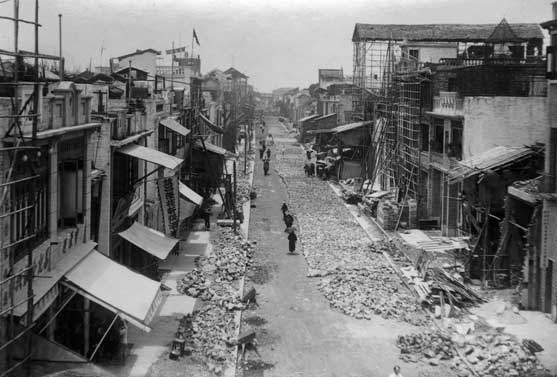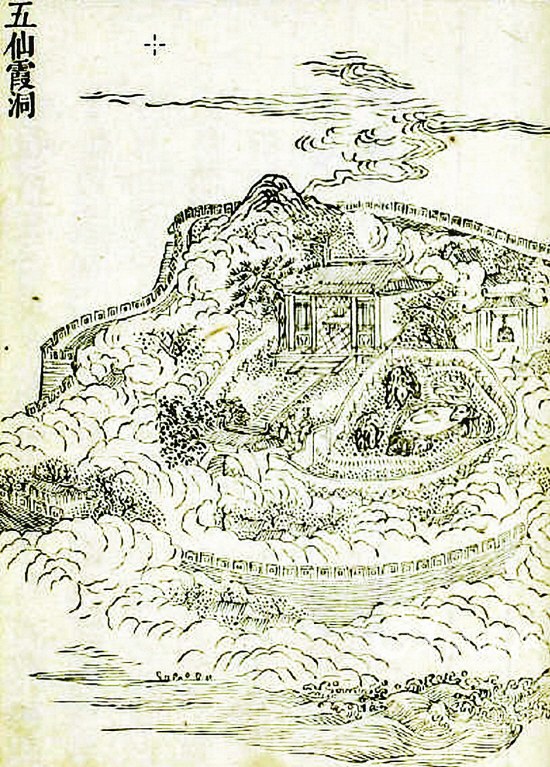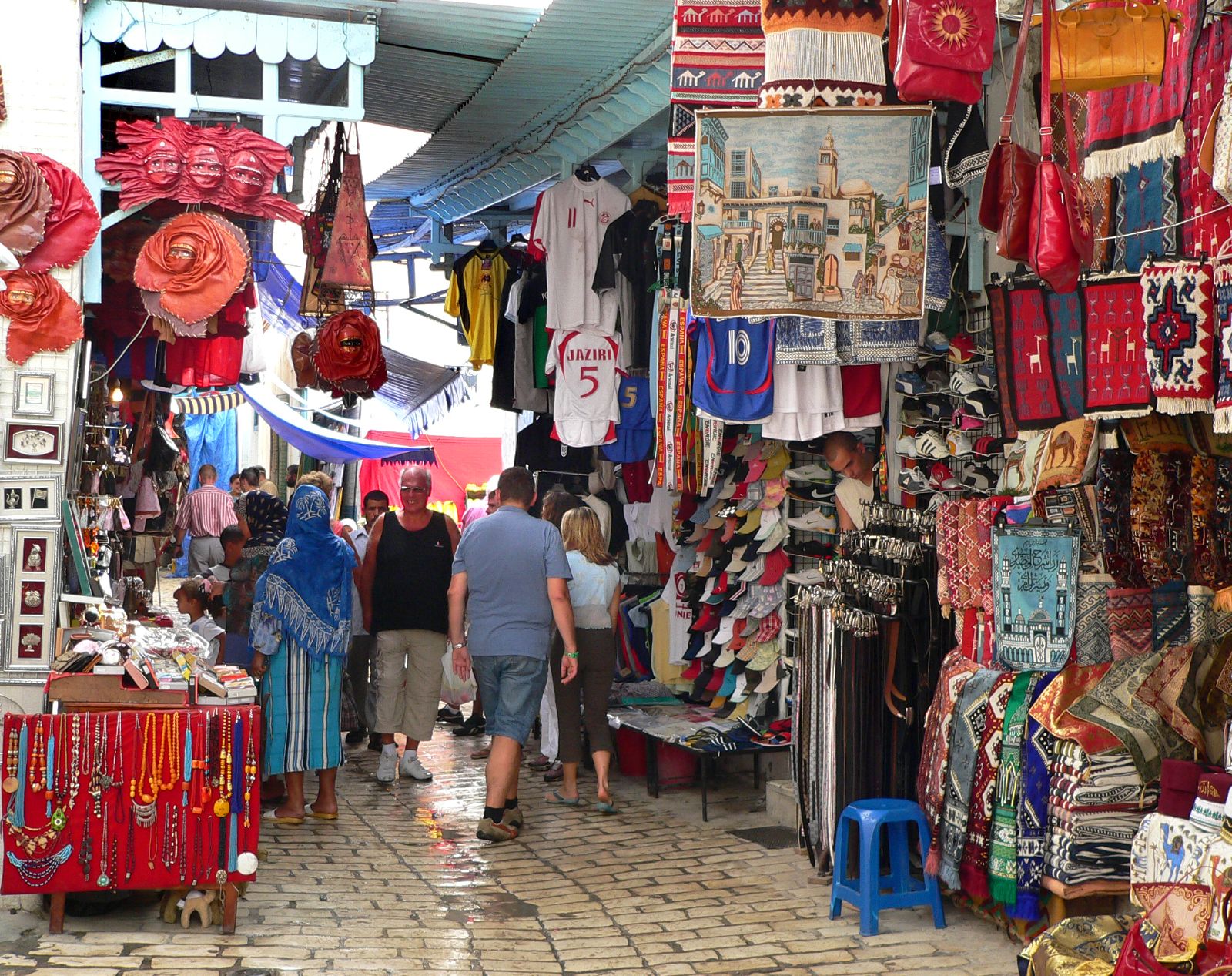|
Shangxiajiu
Shangxiajiu Pedestrian Street (), or simply as Shangxiajiu (), is a commercial pedestrian street in Liwan District, Guangzhou, Guangdong, China. It is the first business street in Guangzhou, and it opened in September 1995. Location Located in the old town of Xiguan (), it stretches from Shangjiu Road () and Xiajiu Road () in the east to Dishifu Road () in the west, and traverses Baohua Road () and Wenchang Road (), about long with more than 300 shops. Shangxiajiu is composed of the unique and historical architecture based on and |
Xiguan
Saikwan or Xiguan is an ancient town and an area in the Liwan district of Guangzhou, China, which was located west of the old walled city. The Thirteen Factories trading enclave was located on its southern shore and the Shamian enclave was constructed beside it. Xiguan continues to have a distinctive culture within Guangzhou and some residents speak a distinctive dialect of Cantonese. It now forms most of Liwan District. Name Before the 20th century, Guangzhou was a walled city with many gates. Its western gates included the Taiping Gate ''Tàipíngmén''; . "Gate of Great Peace") and the West Gate ''Zhengximén'', . "Straight Western Gate"). "Saikwan" or is a romanization of the local Cantonese pronunciation of the same Chinese characters. It was formerly the area's more common English name, although Mandarin pinyin is now the official form within China. It was also sometimes simply translated as "Westgate" or the "western suburbs" of Guangzhou ( formerly kn ... [...More Info...] [...Related Items...] OR: [Wikipedia] [Google] [Baidu] |
Liwan District
Liwan District is one of 11 urban districts of the prefecture-level city of Guangzhou, the capital of Guangdong Province, China. The district is split into two parts by the Pearl River: Xiguan in the northeast and Fangcun in the southwest. History Liwan District was named after "Lizhiwan", which is derived from poem of "a bay of green water and red lychees along both banks". It covers an area of and has a permanent population of about 540,000 and a permanent nonnative population of over 200,000. Liwan District is positioned in the flourishing west part of Guangzhou, on the northeast bank of the Pearl River. Liwan was originally a western suburb of Guangzhou known as Xiguan and Huadai/Huadi located in between two counties of Panyu County and Nanhai County. On 15 February 1921 Liwan along with Guangfu (present Yuexiu) formed the City of Guangzhou. Fangcun, in the western part of Liwan District, lay at the southwest of Guangzhou's downtown area and south of Pearl Ri ... [...More Info...] [...Related Items...] OR: [Wikipedia] [Google] [Baidu] |
Guangzhou
Guangzhou (, ; ; or ; ), also known as Canton () and alternatively romanized as Kwongchow or Kwangchow, is the capital and largest city of Guangdong province in southern China. Located on the Pearl River about north-northwest of Hong Kong and north of Macau, Guangzhou has a history of over 2,200 years and was a major terminus of the maritime Silk Road; it continues to serve as a major port and transportation hub as well as being one of China's three largest cities. For a long time, the only Chinese port accessible to most foreign traders, Guangzhou was captured by the British during the First Opium War. No longer enjoying a monopoly after the war, it lost trade to other ports such as Hong Kong and Shanghai, but continued to serve as a major transshipment port. Due to a high urban population and large volumes of port traffic, Guangzhou is classified as a Large-Port Megacity, the largest type of port-city in the world. Due to worldwide travel restrictions at the beg ... [...More Info...] [...Related Items...] OR: [Wikipedia] [Google] [Baidu] |
Tong Lau
Tong lau or ke lau are tenement buildings built in late 19th century to the 1960s in Hong Kong, Taiwan, Southern China, and Southeast Asia. Designed for both residential and commercial uses, they are similar in style and function to the shophouses with five-foot way ( nan, têng-á-kha) of Southeast Asia. Over the years, tong lau construction has seen influences of Edwardian style architecture and later the Bauhaus movement. Etymology ''Tong lau'' (Cantonese) or ''tang lou'' (Mandarin) means "Chinese building" – ''Tong'' or ''Tang'' () refers to the Tang dynasty and is used as a term to mean Chinese, and ''lau'' () is a building with more than one floor. It is a general term for a type of building found in Hong Kong that also developed in Macau and Canton (Guangzhou) from traditional Southern Chinese townhouses. Architecture The early buildings were generally long and narrow with width of between 12 and 15 feet determined by the length of the wooden beams. In Hong Kong's bu ... [...More Info...] [...Related Items...] OR: [Wikipedia] [Google] [Baidu] |
Europe
Europe is a large peninsula conventionally considered a continent in its own right because of its great physical size and the weight of its history and traditions. Europe is also considered a subcontinent of Eurasia and it is located entirely in the Northern Hemisphere and mostly in the Eastern Hemisphere. Comprising the westernmost peninsulas of Eurasia, it shares the continental landmass of Afro-Eurasia with both Africa and Asia. It is bordered by the Arctic Ocean to the north, the Atlantic Ocean to the west, the Mediterranean Sea to the south and Asia to the east. Europe is commonly considered to be separated from Asia by the watershed of the Ural Mountains, the Ural River, the Caspian Sea, the Greater Caucasus, the Black Sea and the waterways of the Turkish Straits. "Europe" (pp. 68–69); "Asia" (pp. 90–91): "A commonly accepted division between Asia and Europe ... is formed by the Ural Mountains, Ural River, Caspian Sea, Caucasus Mountains, and the Blac ... [...More Info...] [...Related Items...] OR: [Wikipedia] [Google] [Baidu] |
Shopping Districts And Streets In China
Shopping is an activity in which a customer browses the available goods or services presented by one or more retailers with the potential intent to purchase a suitable selection of them. A typology of shopper types has been developed by scholars which identifies one group of shoppers as recreational shoppers, that is, those who enjoy shopping and view it as a leisure activity.Jones, C. and Spang, R., "Sans Culottes, Sans Café, Sans Tabac: Shifting Realms of Luxury and Necessity in Eighteenth-Century France," Chapter 2 in ''Consumers and Luxury: Consumer Culture in Europe, 1650-1850'' Berg, M. and Clifford, H., Manchester University Press, 1999; Berg, M., "New Commodities, Luxuries and Their Consumers in Nineteenth-Century England," Chapter 3 in ''Consumers and Luxury: Consumer Culture in Europe, 1650-1850'' Berg, M. and Clifford, H., Manchester University Press, 1999 Online shopping has become a major disruptor in the retail industry as consumers can now search for product ... [...More Info...] [...Related Items...] OR: [Wikipedia] [Google] [Baidu] |
Buildings And Structures In Guangzhou
A building, or edifice, is an enclosed structure with a roof and walls standing more or less permanently in one place, such as a house or factory (although there's also portable buildings). Buildings come in a variety of sizes, shapes, and functions, and have been adapted throughout history for a wide number of factors, from building materials available, to weather conditions, land prices, ground conditions, specific uses, prestige, and aesthetic reasons. To better understand the term ''building'' compare the list of nonbuilding structures. Buildings serve several societal needs – primarily as shelter from weather, security, living space, privacy, to store belongings, and to comfortably live and work. A building as a shelter represents a physical division of the human habitat (a place of comfort and safety) and the ''outside'' (a place that at times may be harsh and harmful). Ever since the first cave paintings, buildings have also become objects or canvasses of much artist ... [...More Info...] [...Related Items...] OR: [Wikipedia] [Google] [Baidu] |
List Of Tourist Attractions In China
Tourism in China is a growing industry that is becoming a significant part of the Chinese economy. The rate of tourism has expanded over the last few decades since the beginning of reform and opening-up. The emergence of a newly rich middle class and an easing of restrictions on movement by the Chinese authorities are both fueling this travel boom. China has become one of world's largest outbound tourist markets. According to Euromonitor International, economic growth and higher incomes in nearby Asian countries will help China to become the world's number one tourist destination by 2030. China ranked second in the world for travel and tourism's contribution to GDP in 2022 ($814.1 billion), and first in the world for travel and tourism's contribution to employment (66,086,000 jobs in 2014). Tourism, based on direct, indirect, and induced impact, accounted for 9.3 percent of China's GDP in 2013. In 2017, the total contributions of China's Travel and Tourism sector made up 11% ... [...More Info...] [...Related Items...] OR: [Wikipedia] [Google] [Baidu] |
Culture Of China
Chinese culture () is one of the world's oldest cultures, originating thousands of years ago. The culture prevails across a large geographical region in East Asia and is extremely diverse and varying, with customs and traditions varying greatly between provinces, cities, and even towns as well. The terms 'China' and the geographical landmass of 'China' have shifted across the centuries, with the last name being the Great Qing before the name 'China' became commonplace in modernity. Chinese civilization is historically considered a dominant culture of East Asia. With China being one of the earliest ancient civilizations, Chinese culture exerts profound influence on the philosophy, virtue, etiquette, and traditions of Asia. Chinese characters, ceramics, architecture, music, dance, literature, martial arts, cuisine, visual arts, philosophy, business etiquette, religion, politics, and history have had global influence, while its traditions and festivals are celebrated, i ... [...More Info...] [...Related Items...] OR: [Wikipedia] [Google] [Baidu] |





